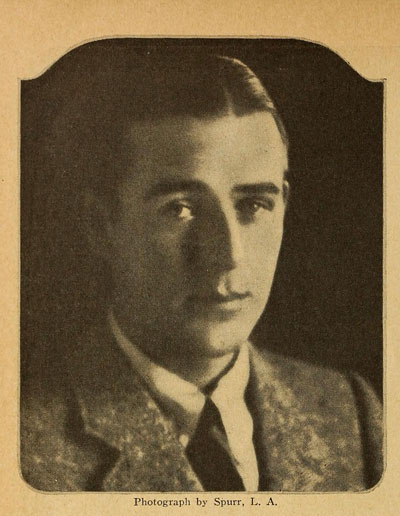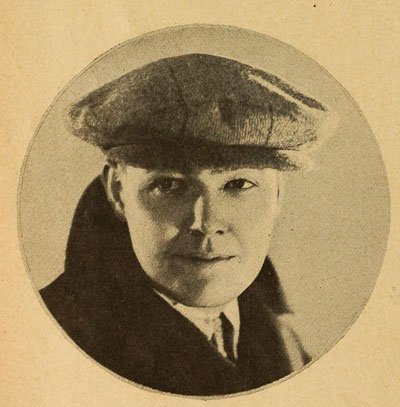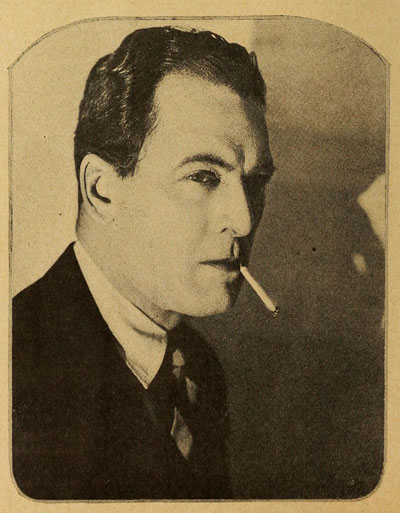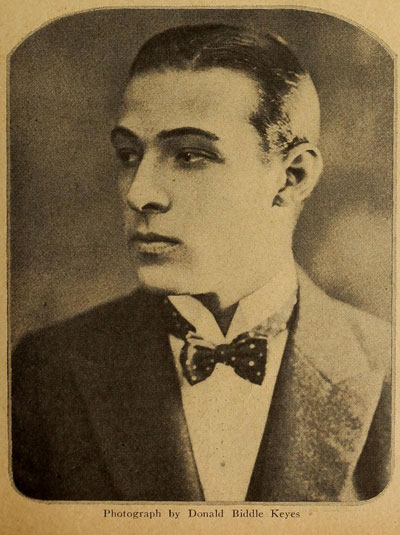I do enjoy classic “scientific” attempts to explain the very subjective appeal of movie stars and Motion Picture Magazine gave it a whirl in 1922. Why do audiences love particular stars? Could is be something… primal?
Frederick van Vrancken puts forth his theory that six stars represent “the strong instinct of humanity.”
“Very often, in fact, it is not the most talented or the best-looking actor who appeals to us the most. What attracts and holds us is some inner psychological magnetism, which we ourselves, as a rule, are unable to explain or describe.
Did you ever stop to think that all the great motion picture stars are unlike one another in nearly every respect, and that we like each one for a different reason?
The explanation for this lies in the fact that every one of them possesses an “indescribable something” which appeals directly and intimately to some specific fundamental instinct or desire within us.”
(Or human beings like variety and demand it in their entertainment but do carry on.)
“It is not altogether the person himself or herself that accounts for this appeal. The cause goes far deeper than mere individual attraction.
Why is it, then, that certain stars hold us, when other actors, apparently as deserving, do not?
It is because each star represents some great human ideal. Each one has become a symbol of some powerful instinct in the race. Each one stands for some strong hidden impulse in the heart of mankind.
Herein lies the secret of their power and lasting popularity. And herein we have an explanation of why other actors — often more competent and better-looking — fail to grip us.”
(Sheesh! Talk about damning by faint praise!)
“This month I have chosen six radically different types of male stars, and have analyzed their appeal, showing how each one is a symbol of some specific universal instinct in humanity.”
Okay, sure, we’ll bite. You may fire when ready, Gridley.
(Also, we are ideally situation to judge for ourselves as every one of these gents has at least one movie released on home video.)

WALLACE REID: THE COMRADE
The appeal of Wallace Reid is that of the gay companion. He is always pleasant and buoyant — he knows how to enjoy himself and to make others about him happy also; and his light-heartedness acts as an antidote to gloom and sorrow. He has about him the air of devil-may-care youth — nothing depresses him or subdues his bubbling spirits. He is not concerned with the deeper and more serious problems of life, and he lives but for the moment, snatching the evanescent joys from the world as he passes happily along. On his lips is ever the old dictum: Let us be happy today, for tomorrow we may be dead. He is ideal company — “the life of the party” — charming, genial, ingratiating and magnetic. Every woman — and man, too — desires a comrade like Reid; and so he has come to be the symbol of friendship and camaraderie.
Note: This description would prove to be a bit on the nose as Reid died only a few weeks later while attempting to cure himself of his crippling morphine addiction.

CHARLES RAY: THE BROTHER
Every girl likes a younger brother — one whom she can mother, admire, scold, confide in and advise. And this is exactly the type of young man that Charles Ray represents. He is earnest, honest, straightforward, and a trifle unsophisticated; and he is possessed of that slight bashfulness which makes him lovable and sympathetic. There are few girls who would not be proud of him as a brother. In fact, be appeals directly to their sisterly instincts, and arouses in them that girlish love which is both maternal and doting, both domineering and self-sacrificing. Charles Ray is the typical family boy, concerned with the simple, homely things of life. Mothers consider him an ideal companion for their young daughters, and wish he was their own son. Because of this appeal, he has come to be the accepted symbol of the young brother.
Note: It’s funny how quickly these magazines forget but Ray actually played a variety of roles at the height of his fame, not just country boys. However, the country boys were his most popular characters.

THOMAS MEIGHAN: THE HUSBAND
Thomas Meighan is the type of man with whom every woman feels a sense of security and protection. He is what is termed a safe, all-round man. One feels that he is truthful and honorable, and one trusts him instinctively. He also impresses one with his staunchness and loyalty; and despite his sympathetic nature, he is virilely masculine. He is neither fickle nor flighty; and he is genuinely and impulsively fond of children and dumb animals and the homely things of life. About him is an atmosphere of domesticity, solidity, permanency and reliability. Nor is he lacking in the manly traits. Altho [sic] he is sentimental, considerate and tender, women know they can lean on him, and that he would tight for his own. In brief, he is the symbol of the ideal husband, and thus he makes a powerful appeal to every woman’s homing instinct.
Note: Um, yeah, but have you seen The Land of Promise? The original is lost but its remake, The Canadian, exists. Despite being an excellent film, I would not exactly describe Meighan’s character as an ideal husband.

WILL ROGERS: THE BELOVED VAGABOND
Will Rogers represents the call of the open road. He stirs up the wanderlust which is in us all — the romance of the haphazard, happy-go-lucky existence. Moreover, he is helpless and unaggressive, and he arouses that deep sympathy and sense of justice which the whole world feels for the underdog when he doesn’t growl. Rogers — heavens knows! — is no Adonis. Nor is lie what is technically meant when one speaks of a “great actor” — like Mansfield or Booth, for example. His wistful loneliness, coupled with his good nature, evokes the mothering, administrative instinct in woman : and in his capacity of the poor and amiable “beloved vagabond,” he is the symbol of all which that phrase implies.
Note: Rogers is probably more famous today for his social commentary but the majority of his filmography was indeed silent.

RUDOLPH VALENTINO: THE LOVER
All the world loves a lover; and Rodolph Valentino epitomizes the feminine ideal of the amorous and romantic Prince Charming. In every woman’s heart is the dream of colorful adventure — the image of a phantom lover, who is the one dangerous rival of every flesh-and-blood husband and sweetheart. The dazzling, magic romance in which the Prince of the Royal Blood rides out of the shadows on a milk-white horse, steals away the trembling, happy Princess, and carries her off to some distant land where they live happily ever after — this is the girlhood dream which Valentino calls into being. He is the one indisputable Romeo of the screen; and every woman, for the moment, becomes a daughter of the Capulets. Valentino represents the world-old lure of sex and the ideal of perpetual romance. He is the symbol of the eternal lover.
Note: Wow. What van Vracken doesn’t know about women is a lot.

WILLIAM S. HART: THE FIGHTER
The whole world loves a fighter, especially when he is fighting for the right; and William S. Hart stands for the spirit of knighthood in modern life. He is a Western Don Quixote, a cavalier of truth and honor — an intrepid slayer of dragons. And with this fearless and ever-ready belligerence he combines the simple lusty passions and the grim brute force, which — however deeply hidden — are in all of us. It is thus that he arouses both our sympathy and our admiration, for he represents the hot blood and the courageous action which men strive for, and which women glory in because it gives them a sense of security and protection. Furthermore, Hart possesses a silent strength and poise, and a sense of power — which are instinctive ideals of manhood. In short, he is the symbol of the strong, primitive man and the fearless fighter.
Note: Oh my!

So, what do you think? Actual science or just fan magazine bunk? Leave a comment and let me know.
All clippings courtesy of the Media History Digital Library.
***
Like what you’re reading? Please consider sponsoring me on Patreon. All patrons will get early previews of upcoming features, exclusive polls and other goodies.

I guess psychobabble goes back farther than the mid-20th century. I found your comments more interesting than the guy’s article.
But regarding Reid….Wasn’t his addiction the result of medical treatment after a train accident, not recreational drug use? I read that he suffered a head injury, and needed to relieve his pain with morphine in order to finish the film Valley of the Giants before he was completely healed.
To be honest, I am not sure. Some friends said that he was addicted as the result of an injury and the studio pumped him full of morphine but they would have had every reason to say something like it. Obviously, I think Paramount might have done so but considering that there was every reason to try to salvage his reputation, I hesitate to be definitive.
Really interesting post! My two cents: all these actors appeal to me on a visceral level right away, no actual science necessary 😉
Ah, silent Will Rogers…love him, always have. Like Roscoe Arbuckle, Rogers is another fella I’d quickly jump in the wayback machine to see in vaudeville (and the Follies).
Talking Will was pretty wonderful too:
“There are three kinds of men. The one that learns by reading. The few who learn by observation. The rest of them have to pee on the electric fence for themselves.”
Ha! So true!